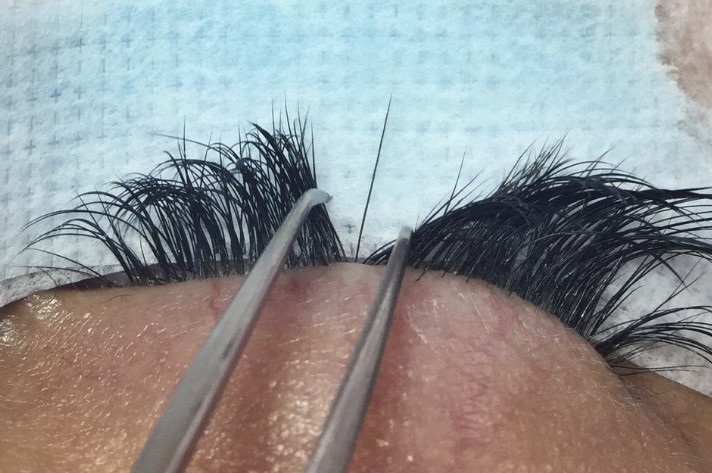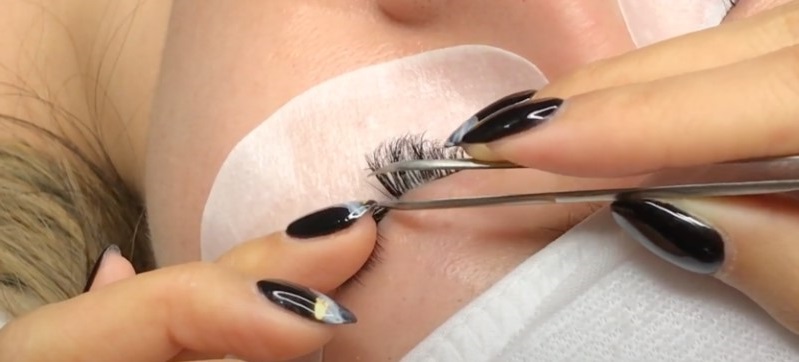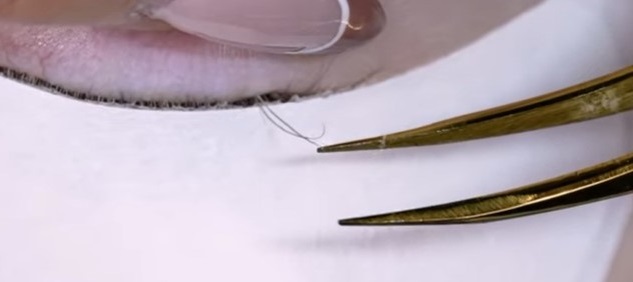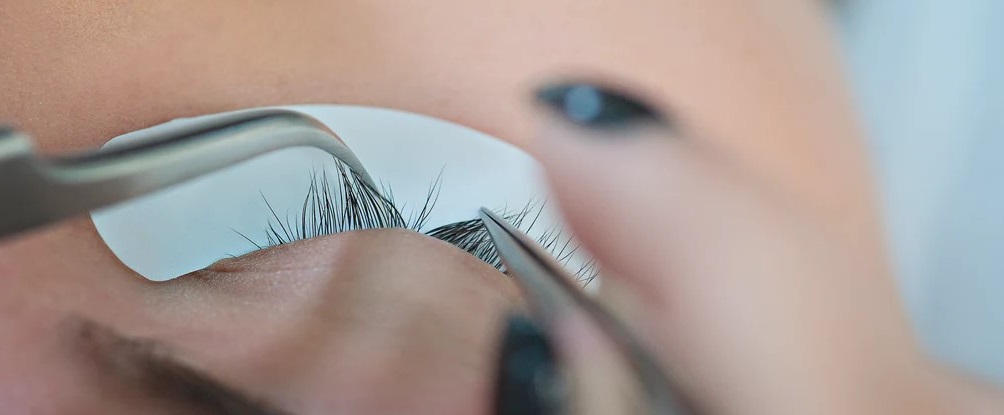Lash technicians must master proper isolation techniques to ensure that their clients’ natural lashes remain safe and healthy during the lash application process. Proper isolation involves separating each natural lash from the others, so that individual eyelash extensions can be applied without damaging or harming the client’s natural lashes. The best way to learn how to isolate eyelashes is to join our eyelash extensions classes, where you’ll learn from one of the industry’s leading trainers. Different types of isolation techniques are available and we will discuss for lash technicians how to master proper isolation skills.
What are the different types of isolation techniques?
There are several ways to isolate lashes when applying eyelash extensions: using tweezers, using your fingers, using tape, or using a gel pad. Let’s take a look at each technique in more detail.
Isolate lashes with both tweezers
Using two tweezers is one of the most common methods used by lash technicians when isolating individual lashes before applying eyelash extensions. This method requires precision and accuracy to ensure that each lash is properly isolated without any damage to the surrounding natural lashes. To use this method, simply hold one tweezer on top of the client’s natural eyelashes and use another tweezer to gently pull out individual hairs from underneath them until they are completely separated from their neighboring hairs. This technique takes some practice but can be very effective if done correctly.

Isolate lashes using your fingers
Isolating with your fingers can also be an effective way to separate individual hairs for eyelash extension application. To do this method effectively, you should place your thumb on top of a cluster of natural eyelashes and then gently move them around with your index finger until they are separated enough for you to apply an extension onto each isolated hair strand individually without causing any damage or discomfort to your client’s eyes or skin. This method may take longer than other methods, but it can be very gentle on sensitive skin as there is no direct contact between metal tools (like tweezers) and delicate skin areas such as around the eyes and brows.

Isolate lashes using tape
Tape can also be used as an effective tool for isolating individual hairs when applying eyelash extensions; however, it should only be used by experienced professionals who understand the need for special care when working near delicate eye tissue during these treatments. The technician should carefully measure out small pieces of tape to cover just one group of hairs at a time before peeling off all other hairs, leaving only those that were taped together free for easy application work afterwards. Tape helps keep everything neat while working near the eyes, making it a perfect choice if you want faster results too!
Isolate Lashes With Gel Pad
Another great option for isolating individual strands before applying eyelash extensions is with a gel pad – similar in concept but not exactly like tape – which allows technicians more control over where their product goes due to its malleable nature. Gel pads provide extra protection against accidentally tugging on nearby strands since they conform better than traditional materials like plastic wrap, making them ideal choices, especially when dealing with finer/thinner hair textures where slip-ups might occur otherwise. They also help reduce prep time since everything stays in place once placed down, instead of having multiple pieces being moved around every few minutes depending on where you’re currently working.

Why is proper isolation technique important?
It is essential that lash technicians master proper isolation techniques because incorrect separation could lead to damage or discomfort caused by adhesive seeping onto nearby follicles that are not meant for lashing. This can result in potentially painful situations if left untreated. Additionally, improper separation may cause clumps within clusters due to a lack of space created between adjacent hairs during the installation process, resulting in uneven and sloppy-looking sets. This means wasted precious time spent correcting mistakes instead of focusing purely on creating beautiful looks and providing exceptional services at every single appointment. Lastly, but importantly, incorrect separation poses risks as glue and adhesive fumes could end up getting into the client’s eyes, causing irritation and potential long-term harm even after the treatment has been successfully completed. All of these reasons make mastering correct isolation skills extremely important, not just aesthetically speaking, but also in terms of safety.
So what are the benefits of proper isolation?
The benefits of mastering correct isolation skills include less time spent prepping clients’ eyebrows/lashes prior to appointments because everything stays neatly organized throughout the entire service, rather than having multiple pieces constantly moved around every few minutes depending on the area currently being worked on. It also results in improved aesthetics through perfectly aligned and separated clusters, ensuring that clients get the highest quality sets possible during every single visit. Additionally, proper isolation leads to greater comfort levels achieved, thanks to reduced chances of adhesives coming into contact with undesired parts of the face or body, etc. Ultimately, the biggest benefit gained lies within the knowledge itself. Knowing how to perform the job efficiently while still maintaining the highest standards of safety will result in a confidence boost, allowing artists to tackle whatever comes their way head-on and confidently!
We also recommend that you read these articles:

